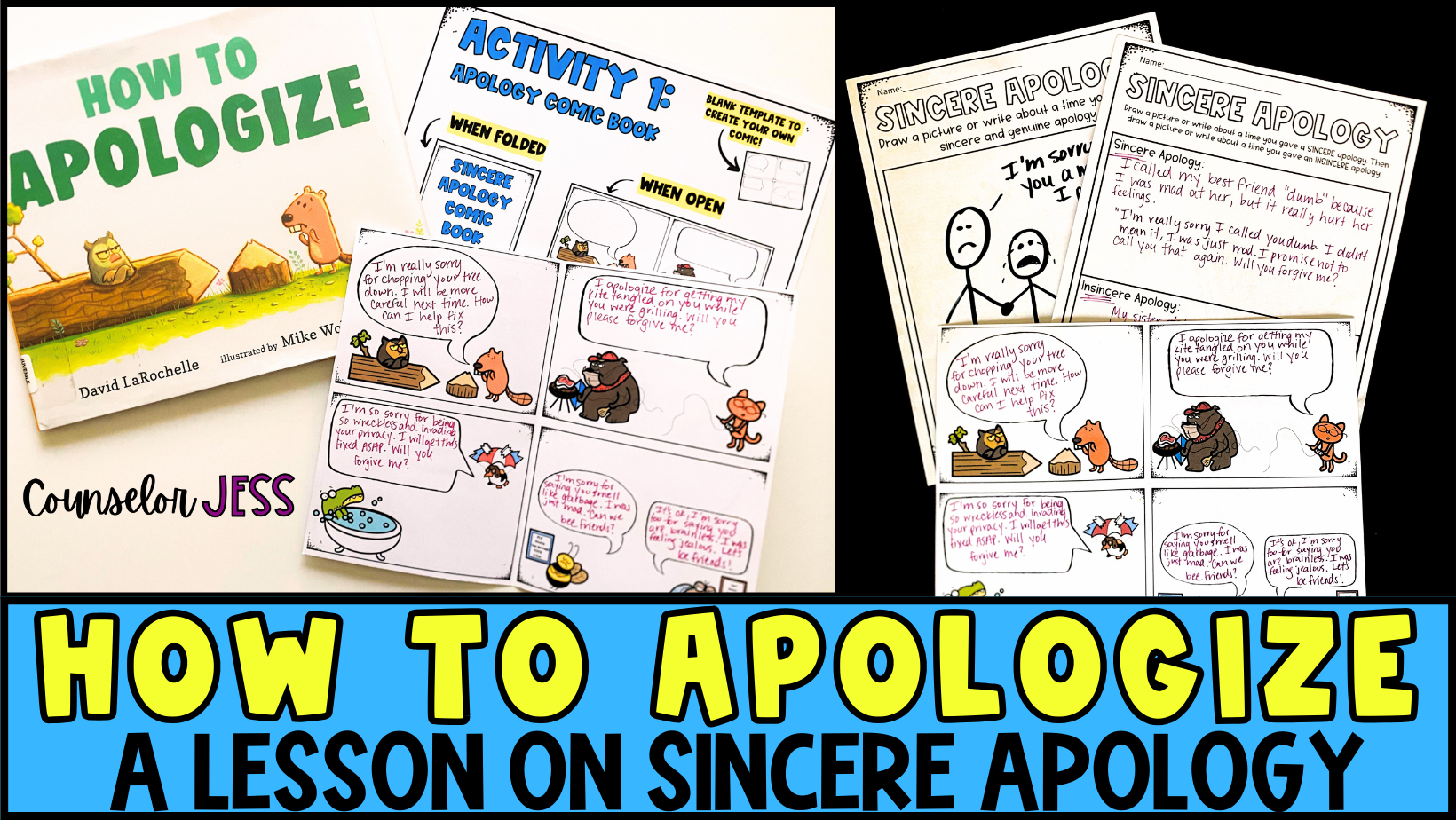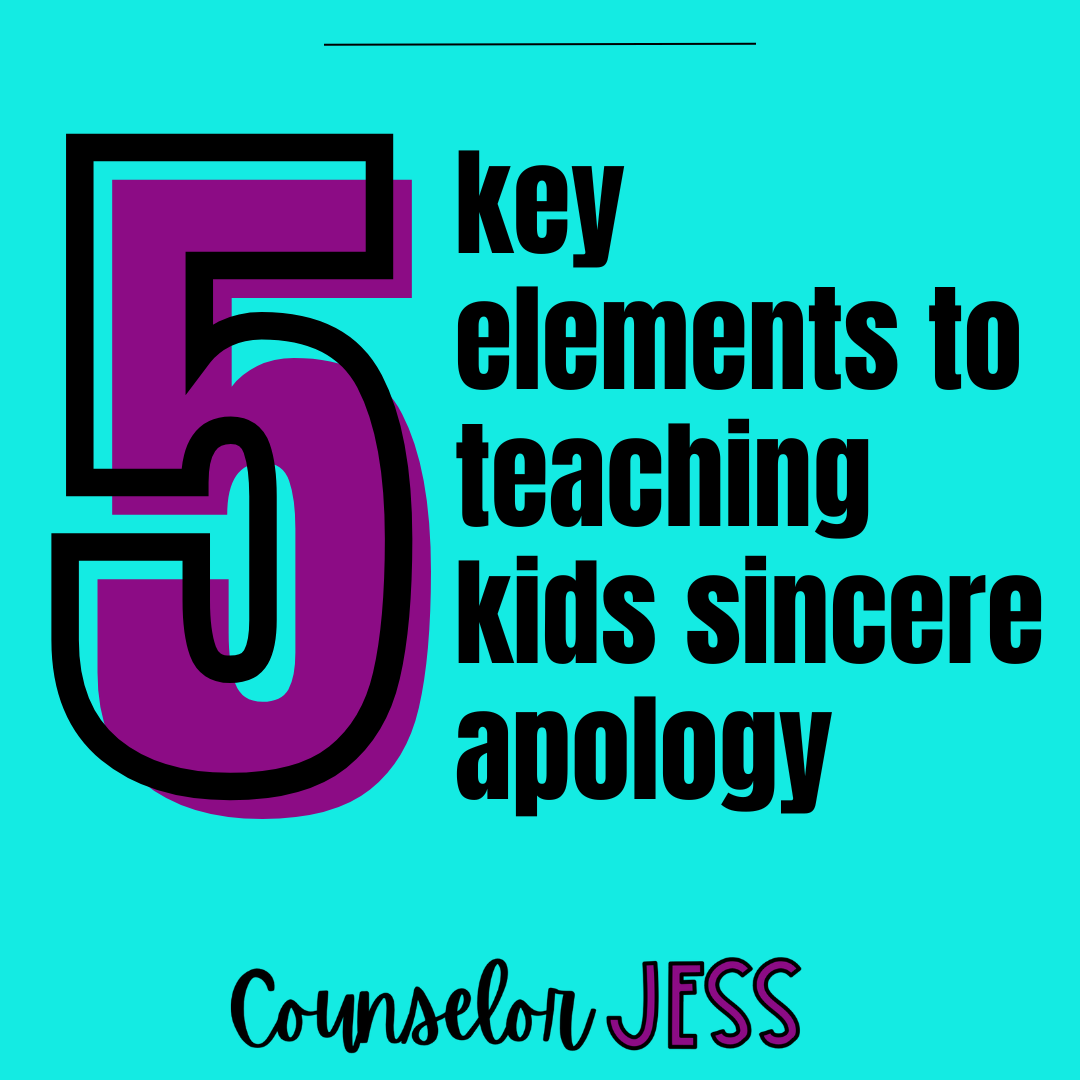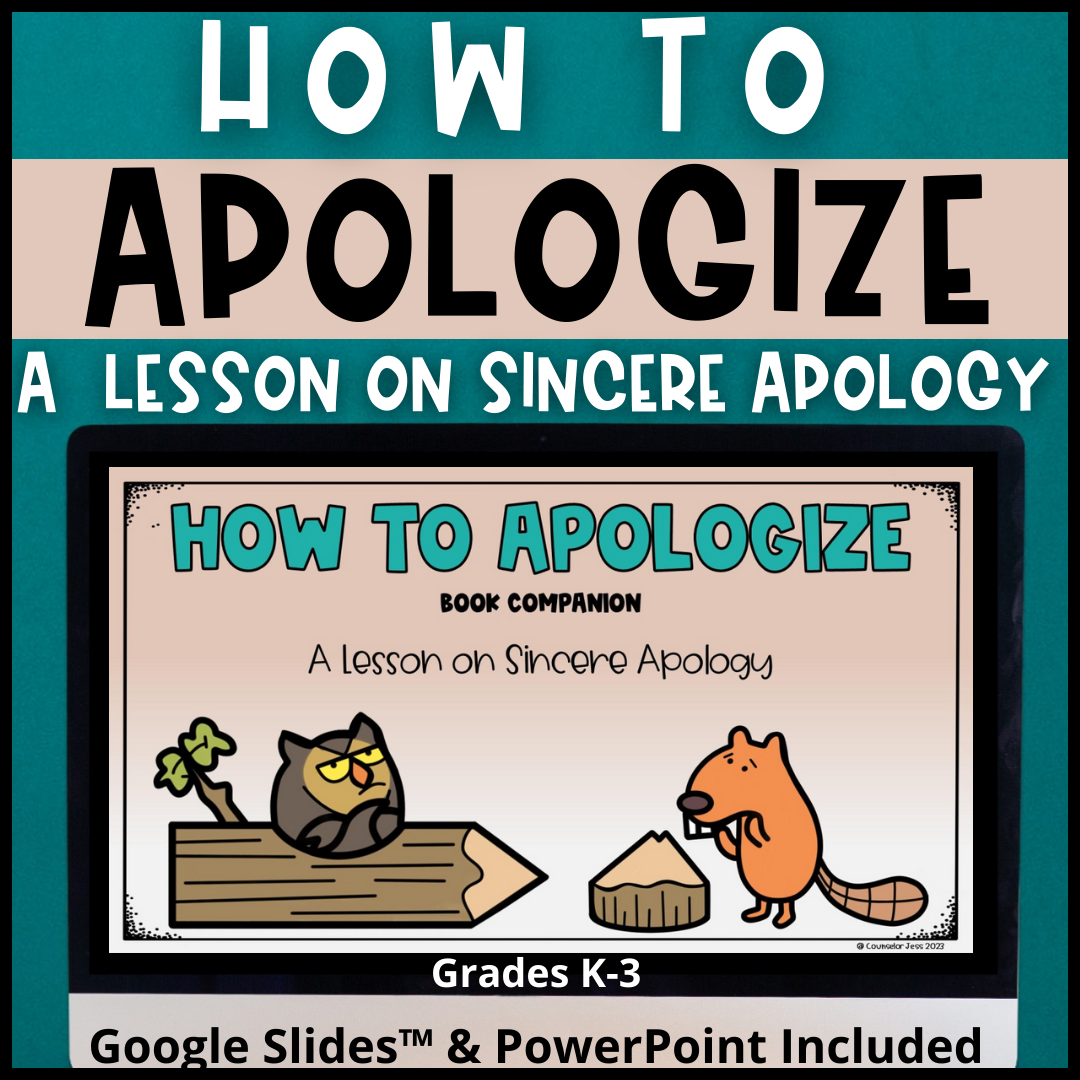How to Apologize 101: A Lesson for Elementary Students
Introduction: Why We Need to Teach Students How to Apologize
One of our fundamental roles as counselors and educators is to guide students.
Not only academically, but also socially and emotionally.
Apologizing is a skill often overlooked.
And sometimes, we can assume this skill has already been taught or developed in the home.
Explicit instruction and guided practice in this skill are both crucial in helping young learners develop empathy.
We need to teach them how to take responsibility for their actions.
By teaching children the art of a sincere apology, we lay the groundwork for more harmonious relationships both inside and outside the classroom.
About the Author
This post, crafted by Counselor Jess.
I love making lessons, activities, and other school counseling resources that are simple, engaging, and ready to use instantly. I know how busy school counselors are! I want to save you time so you can do the things you love and have a healthy work/life balance.
How to Help a Student Make a Sincere Apology
We have such powerful roles in students’ lives.
And sometimes, examining these skills in ourselves can make us feel frustrated or insecure - because we don’t know how to teach them.
I want this article to be very actionable.
So here are some practical, step-by-step tips for counselors and teachers to help students craft a sincere apology.
Feel free to bookmark this page for future reference, or share it to your own socials so you can reference it later.
Start with Understanding
Begin by ensuring the student understands why their actions were hurtful or wrong. Discuss the situation calmly, helping them see the perspective of the other person involved.Express the Apology in Their Own Words
Encourage the student to express their apology using their own words. This makes the apology more personal and sincere.
Guide them to include specific details about what they are sorry for.Encourage Empathy
Ask the student to describe how they think the other person felt because of their actions. This fosters empathy and makes the apology more meaningful.Discuss Amends
Help the student think of ways they can make amends or correct the situation. Whether it's helping to fix or replace something, or simply spending time to rebuild trust, taking action shows commitment to making things right.Role-Play the Apology
Practice the apology through role-playing. This not only prepares the student for the actual moment but also eases their anxiety about facing the person they’ve wronged.Provide Feedback
After the role-play, give feedback on their tone and body language to ensure their apology comes across as genuine.Follow Up
After the student has made their apology, have a follow-up discussion to reflect on the experience. Discuss what went well and what they learned from the situation.
Key Elements of a Sincere Apology
When helping students craft an apology, it helps to have a type of rubric.
Here are the key elements of a sincere apology:
Acknowledgment: Teach students to recognize and admit their mistake.
Responsibility: Explain the importance of taking responsibility for their actions and not making excuses.
Forgiveness: Encourage students to ask for forgiveness, but to always be prepared to accept “NO” for an answer. Part of taking responsibility is to allow the person you hurt to feel what they need to feel and to give them time to heal.
Amends: Discuss ways to make things right and prevent future issues.
Commitment to Change: Highlight the need for a commitment to not repeat the mistake.
Ready to Go Lesson for Elementary Students
Learning and practicing these skills takes time for students.
And teaching these skills can take time for both educators and counselors!
To save you time, I’ve done the planning for you.
How to Apologize Classroom Lesson on Sincere Apology
This engaging resource serves as a book companion to "How to Apologize" by David LaRochelle, offering a mini lesson on sincere apologies, numerous real-world examples, and interactive practice scenarios.
Students will create their own apology using comic books, and they’ll reflect on their learning with specially designed worksheets.
This resource is available in both PowerPoint and Google Slides formats.
Conclusion: We Need to Teach Our Students About What Makes a Sincere Apology
We need to teach our students how to apologize, and we need model what a sincere apology looks like.
It's all about helping them see how their actions affect others, and teaching them the real meaning of saying "I'm sorry."
A true apology isn’t just about the words; it's about really understanding what went wrong, caring about the other person's feelings, and making a promise to do better next time.
As teachers and counselors, we're perfectly positioned to help students develop this critical set of skills.
If you need more resources or support in this area, I’d love to help!










